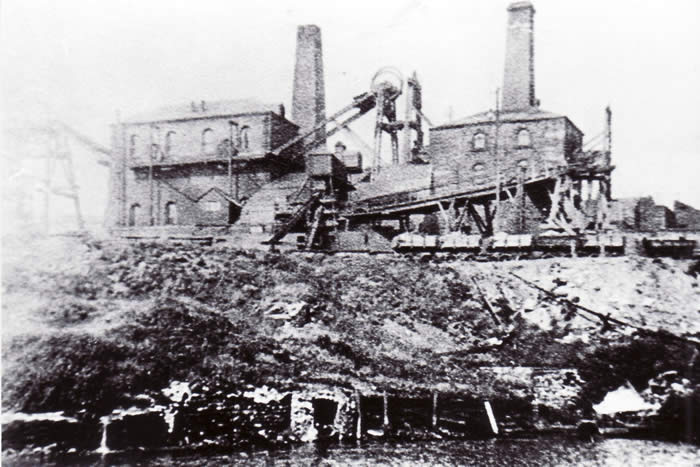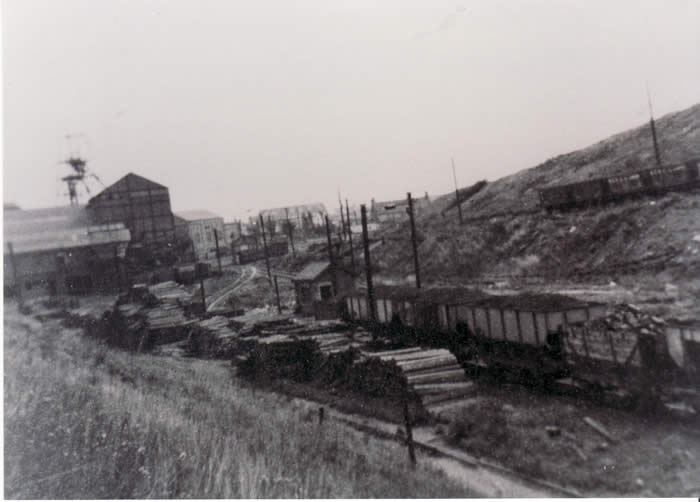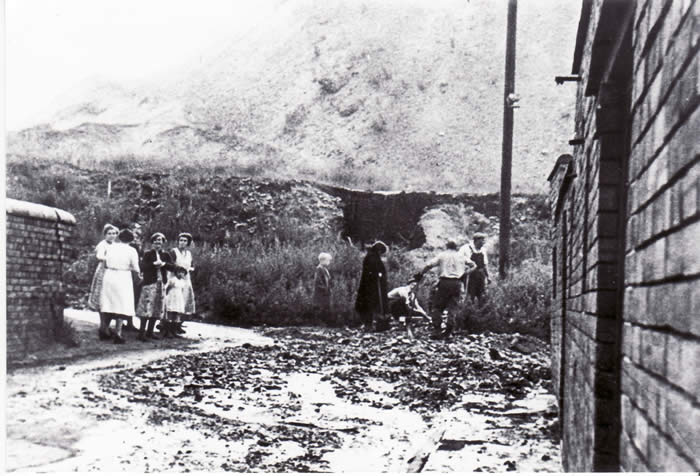
return to homepage
Hetton Local History Group - Boundary Heritage Walk Part 2
Point B information 
(GR 360 481 ) Directions to point C Continuing climbing the hill using the footpath. On the right there is the entrance to Hetton Country Park – a series of three lakes formed during the early 1990s when the area was reclaimed from a jumble of pit heaps and marshy ground. The slag heaps were deposited during the 19th and 20th centuries as waste from the Hetton Lyons colliery lying less than a mile to the south. This was the first colliery in Hetton and opened in 1822. Today the area is a pretty recreation area for water sports, fishing and cycling, an excellent amenity for the town. At the top of the hill in the location of the gates into the quarry area. ( Point C) GR 364 482 QR code or link to information. Heritage Information Point B Eppleton Pit This section of the walk follows the route that many pit-men would have walked on the way to work. The lane is called Downs Pit lane. The pit refers to Eppleton Pit which was situated on the facing hillside half a mile on, at the top of the hill. Eppleton Colliery was sunk in 1825 and was initially owned by the Hetton Coal Company, who owned the Lyons Colliery which had been started a few years earlier in 1822. There had been trouble at first during the sinking of the mine due to excessive water and sand, flooding into the workings, but eventually these problems were overcome by 1833. The mine had three pits, the Caroline shaft started in 1824, the Jane pit was sunk in 1837and the New Pit (Lindsay Pit), the third shaft was sunk in 1870 and completed in 1873. There were more than 1600 miners employed under-ground in the colliery’s prime with a further 400 on the sur-face. The colliery closed in 1986, and was fully integrated by then as part of the Hawthorn Complex. Like the majority of collieries throughout the country it had suffered due to responses to the miner’s strike during 1984/5 by the Conservative Government of the day. The colliery was not without drama and disasters throughout its lifetime. On the 28 January 1836 twenty men and boys were killed due to an explosion, and on the 13 December 1895 3 men were killed having been overcome by gas. Incidentally one of those who died in this latter incident was Anthony Harrison, a distant relative of Kate Middleton recently married to Prince William. A further 5 miners were killed in an explosion in July 1951 just three weeks after the major disaster at Easington Colliery 5 miles away. All told there were 188 men and boys killed within the colliery over the years as a result of a variety of accidents and incidents. The seams were not particularly gassy but fire-damp was accepted as a hazard in all the seams necessitating the use of the safety lamp and other safety equipment. The colliery was one of the last inland collieries to continue working, albeit for only a short time, following the miner’s strike during the mid 1980s. The remains of the slag heap of the colliery can still be seen on the left hand roadside as you climb the hill. Currently much of the heap has been buried in the quarry on the left and as time passes and the quarry continues in operation the remainder of the slag heap will be buried in the yawning gap. The original slag heap was a pyramidal pile which reached to within 15 metres of the closest miners’ cottages but thankfully it is no more than a grassy mound to the east of the town.
|
-- info@hettonlocalhistory.org.uk --



